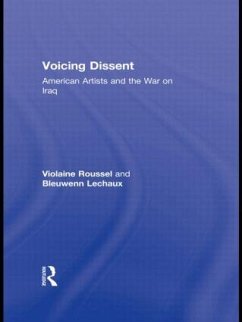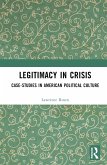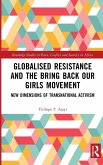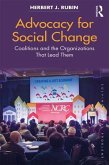- Gebundenes Buch
- Merkliste
- Auf die Merkliste
- Bewerten Bewerten
- Teilen
- Produkt teilen
- Produkterinnerung
- Produkterinnerung
This book presents a unique and original series of interviews with American artists (including the Guerilla Girls, Shepard Fairey and Sean Astin) who have voiced their opposition to the war in Iraq. These discussions examine the relationships between arts and politics and the limits and conditions of political speech and action.
Andere Kunden interessierten sich auch für
![Legitimacy in Crisis Legitimacy in Crisis]() Lawrence RosenLegitimacy in Crisis175,99 €
Lawrence RosenLegitimacy in Crisis175,99 €![Politics and Aesthetics in Contemporary Native American Literature Politics and Aesthetics in Contemporary Native American Literature]() Matthew HermanPolitics and Aesthetics in Contemporary Native American Literature190,99 €
Matthew HermanPolitics and Aesthetics in Contemporary Native American Literature190,99 €![Americans Thinking America Americans Thinking America]() Charles LemertAmericans Thinking America207,99 €
Charles LemertAmericans Thinking America207,99 €![Muslim Americans Muslim Americans]() Nahid Afrose KabirMuslim Americans200,99 €
Nahid Afrose KabirMuslim Americans200,99 €![Globalised Resistance and the Bring Back Our Girls Movement Globalised Resistance and the Bring Back Our Girls Movement]() Titilope F AjayiGlobalised Resistance and the Bring Back Our Girls Movement198,99 €
Titilope F AjayiGlobalised Resistance and the Bring Back Our Girls Movement198,99 €![Advocacy for Social Change Advocacy for Social Change]() Herbert J RubinAdvocacy for Social Change197,99 €
Herbert J RubinAdvocacy for Social Change197,99 €![Memories of the Future Memories of the Future]() Stephane CorcuffMemories of the Future196,99 €
Stephane CorcuffMemories of the Future196,99 €-
-
-
This book presents a unique and original series of interviews with American artists (including the Guerilla Girls, Shepard Fairey and Sean Astin) who have voiced their opposition to the war in Iraq. These discussions examine the relationships between arts and politics and the limits and conditions of political speech and action.
Hinweis: Dieser Artikel kann nur an eine deutsche Lieferadresse ausgeliefert werden.
Hinweis: Dieser Artikel kann nur an eine deutsche Lieferadresse ausgeliefert werden.
Produktdetails
- Produktdetails
- Verlag: Taylor & Francis
- Seitenzahl: 318
- Erscheinungstermin: 1. Januar 2010
- Englisch
- Abmessung: 240mm x 162mm x 29mm
- Gewicht: 552g
- ISBN-13: 9780415800587
- ISBN-10: 0415800587
- Artikelnr.: 25468067
- Herstellerkennzeichnung
- Libri GmbH
- Europaallee 1
- 36244 Bad Hersfeld
- gpsr@libri.de
- Verlag: Taylor & Francis
- Seitenzahl: 318
- Erscheinungstermin: 1. Januar 2010
- Englisch
- Abmessung: 240mm x 162mm x 29mm
- Gewicht: 552g
- ISBN-13: 9780415800587
- ISBN-10: 0415800587
- Artikelnr.: 25468067
- Herstellerkennzeichnung
- Libri GmbH
- Europaallee 1
- 36244 Bad Hersfeld
- gpsr@libri.de
Violaine Roussel is a sociologist and professor of Political Science at the University of Paris VIII and currently a visiting scholar in the Department of Sociology at UCLA. Bleuwenn Lechaux is currently completing a PhD in political science at the University of Rennes on a comparative analysis of the involvement of theatre artists for social and political causes in Paris and New York since the 1970s.
Foreword Michèle Lamont. Preface Steve Greenfield and Guy Osborn.
Introduction Section 1: Figures of Committed Artists 1. Models and Public
Voices in the Anti-War Movement 1.1. Robbie Conal: Figure of the
Activist-Artist 1.2. Mike Farrell and Robert Greenwald: Leaders of the
Hollywood Movement 1.3. Ozomatli: Not to "Separate Ourselves from the
Movement" 1.4. Kathleen Chalfant: Combining Radicalism with Establishment
2. Generations and Relations to Politics 2.1. Sheila Pinkel:
Activist-Artist in a Dark Time 2.2. Margo Lee Sherman: Bread and Puppet's
Legacy 2.3. Ed Asner: Ambivalence of a Leftist Identification 2.4. Cynthia
Croot: Temporally Rooted Devotion 2.5. Emek: Politicization as an Artistic
Innovation 3. Identities, Communities and Anti-War Activism 3.1. Tony
Shalhoub and Amitis Motevalli: Confronting Middle-Eastern Perspectives 3.2.
Dread Scott: Use of Multilayered Identifications 3.3. Alexandra Paul:
Strategic Identities in the Service of a Cause 3.4. Guerilla Girls On Tour:
Women and Anti-War Activism Section 2: Artistic Professions and Politics
4. Costs and Paradoxes of Engaged Art 4.1. Lida Abdullah and Susan Silton:
Threats on the Visual Arts 4.2. David Clennon: The Price of Political
Commitment in Hollywood 4.3. Fredwreck: The Rules of the Music Industry
4.4. Sophia Skiles: Professional Ambivalences of Political Commitment 4.5.
Mear-One: Paradoxes of Politicization 5. Shaping a Political Intention in
the Form of Art: From Tension to Affinity 5.1. Focus 1: Around Day Zero:
The "Political Fiction Film", An Impossible Genre? Interviews with Bryan
Gunnar Cole (director), Robert Malkany(scriptwriter), Jon Bernthal (actor)
and Anthony Moody (producer) 5.2. Focus 2: Around Living Theatre's Plays
The Brig, No Sir and A Day in the Life of the City: Uses and Constraints of
Street Theatre Plays. Interviews with Actors from the Living Theatre (Jerry
Goralnick and Garry Brackett) 5.3. Shepard Fairey: Changing Clients into
Publics 6. Hollywood and the War: Celebrities versus Politicians? 6.1. Paul
Haggis: Leading by Example 6.2. Bradley Whitford: The Dynamics of The West
Wing 6.3. Sean Astin: Hollywood, Politics and Power 6.4. Peter Coyote:
Engagement versus Activism 6.5. Kimberly Pierce: The Strength of "Cultural
Power"
Introduction Section 1: Figures of Committed Artists 1. Models and Public
Voices in the Anti-War Movement 1.1. Robbie Conal: Figure of the
Activist-Artist 1.2. Mike Farrell and Robert Greenwald: Leaders of the
Hollywood Movement 1.3. Ozomatli: Not to "Separate Ourselves from the
Movement" 1.4. Kathleen Chalfant: Combining Radicalism with Establishment
2. Generations and Relations to Politics 2.1. Sheila Pinkel:
Activist-Artist in a Dark Time 2.2. Margo Lee Sherman: Bread and Puppet's
Legacy 2.3. Ed Asner: Ambivalence of a Leftist Identification 2.4. Cynthia
Croot: Temporally Rooted Devotion 2.5. Emek: Politicization as an Artistic
Innovation 3. Identities, Communities and Anti-War Activism 3.1. Tony
Shalhoub and Amitis Motevalli: Confronting Middle-Eastern Perspectives 3.2.
Dread Scott: Use of Multilayered Identifications 3.3. Alexandra Paul:
Strategic Identities in the Service of a Cause 3.4. Guerilla Girls On Tour:
Women and Anti-War Activism Section 2: Artistic Professions and Politics
4. Costs and Paradoxes of Engaged Art 4.1. Lida Abdullah and Susan Silton:
Threats on the Visual Arts 4.2. David Clennon: The Price of Political
Commitment in Hollywood 4.3. Fredwreck: The Rules of the Music Industry
4.4. Sophia Skiles: Professional Ambivalences of Political Commitment 4.5.
Mear-One: Paradoxes of Politicization 5. Shaping a Political Intention in
the Form of Art: From Tension to Affinity 5.1. Focus 1: Around Day Zero:
The "Political Fiction Film", An Impossible Genre? Interviews with Bryan
Gunnar Cole (director), Robert Malkany(scriptwriter), Jon Bernthal (actor)
and Anthony Moody (producer) 5.2. Focus 2: Around Living Theatre's Plays
The Brig, No Sir and A Day in the Life of the City: Uses and Constraints of
Street Theatre Plays. Interviews with Actors from the Living Theatre (Jerry
Goralnick and Garry Brackett) 5.3. Shepard Fairey: Changing Clients into
Publics 6. Hollywood and the War: Celebrities versus Politicians? 6.1. Paul
Haggis: Leading by Example 6.2. Bradley Whitford: The Dynamics of The West
Wing 6.3. Sean Astin: Hollywood, Politics and Power 6.4. Peter Coyote:
Engagement versus Activism 6.5. Kimberly Pierce: The Strength of "Cultural
Power"
Foreword Michèle Lamont. Preface Steve Greenfield and Guy Osborn.
Introduction Section 1: Figures of Committed Artists 1. Models and Public
Voices in the Anti-War Movement 1.1. Robbie Conal: Figure of the
Activist-Artist 1.2. Mike Farrell and Robert Greenwald: Leaders of the
Hollywood Movement 1.3. Ozomatli: Not to "Separate Ourselves from the
Movement" 1.4. Kathleen Chalfant: Combining Radicalism with Establishment
2. Generations and Relations to Politics 2.1. Sheila Pinkel:
Activist-Artist in a Dark Time 2.2. Margo Lee Sherman: Bread and Puppet's
Legacy 2.3. Ed Asner: Ambivalence of a Leftist Identification 2.4. Cynthia
Croot: Temporally Rooted Devotion 2.5. Emek: Politicization as an Artistic
Innovation 3. Identities, Communities and Anti-War Activism 3.1. Tony
Shalhoub and Amitis Motevalli: Confronting Middle-Eastern Perspectives 3.2.
Dread Scott: Use of Multilayered Identifications 3.3. Alexandra Paul:
Strategic Identities in the Service of a Cause 3.4. Guerilla Girls On Tour:
Women and Anti-War Activism Section 2: Artistic Professions and Politics
4. Costs and Paradoxes of Engaged Art 4.1. Lida Abdullah and Susan Silton:
Threats on the Visual Arts 4.2. David Clennon: The Price of Political
Commitment in Hollywood 4.3. Fredwreck: The Rules of the Music Industry
4.4. Sophia Skiles: Professional Ambivalences of Political Commitment 4.5.
Mear-One: Paradoxes of Politicization 5. Shaping a Political Intention in
the Form of Art: From Tension to Affinity 5.1. Focus 1: Around Day Zero:
The "Political Fiction Film", An Impossible Genre? Interviews with Bryan
Gunnar Cole (director), Robert Malkany(scriptwriter), Jon Bernthal (actor)
and Anthony Moody (producer) 5.2. Focus 2: Around Living Theatre's Plays
The Brig, No Sir and A Day in the Life of the City: Uses and Constraints of
Street Theatre Plays. Interviews with Actors from the Living Theatre (Jerry
Goralnick and Garry Brackett) 5.3. Shepard Fairey: Changing Clients into
Publics 6. Hollywood and the War: Celebrities versus Politicians? 6.1. Paul
Haggis: Leading by Example 6.2. Bradley Whitford: The Dynamics of The West
Wing 6.3. Sean Astin: Hollywood, Politics and Power 6.4. Peter Coyote:
Engagement versus Activism 6.5. Kimberly Pierce: The Strength of "Cultural
Power"
Introduction Section 1: Figures of Committed Artists 1. Models and Public
Voices in the Anti-War Movement 1.1. Robbie Conal: Figure of the
Activist-Artist 1.2. Mike Farrell and Robert Greenwald: Leaders of the
Hollywood Movement 1.3. Ozomatli: Not to "Separate Ourselves from the
Movement" 1.4. Kathleen Chalfant: Combining Radicalism with Establishment
2. Generations and Relations to Politics 2.1. Sheila Pinkel:
Activist-Artist in a Dark Time 2.2. Margo Lee Sherman: Bread and Puppet's
Legacy 2.3. Ed Asner: Ambivalence of a Leftist Identification 2.4. Cynthia
Croot: Temporally Rooted Devotion 2.5. Emek: Politicization as an Artistic
Innovation 3. Identities, Communities and Anti-War Activism 3.1. Tony
Shalhoub and Amitis Motevalli: Confronting Middle-Eastern Perspectives 3.2.
Dread Scott: Use of Multilayered Identifications 3.3. Alexandra Paul:
Strategic Identities in the Service of a Cause 3.4. Guerilla Girls On Tour:
Women and Anti-War Activism Section 2: Artistic Professions and Politics
4. Costs and Paradoxes of Engaged Art 4.1. Lida Abdullah and Susan Silton:
Threats on the Visual Arts 4.2. David Clennon: The Price of Political
Commitment in Hollywood 4.3. Fredwreck: The Rules of the Music Industry
4.4. Sophia Skiles: Professional Ambivalences of Political Commitment 4.5.
Mear-One: Paradoxes of Politicization 5. Shaping a Political Intention in
the Form of Art: From Tension to Affinity 5.1. Focus 1: Around Day Zero:
The "Political Fiction Film", An Impossible Genre? Interviews with Bryan
Gunnar Cole (director), Robert Malkany(scriptwriter), Jon Bernthal (actor)
and Anthony Moody (producer) 5.2. Focus 2: Around Living Theatre's Plays
The Brig, No Sir and A Day in the Life of the City: Uses and Constraints of
Street Theatre Plays. Interviews with Actors from the Living Theatre (Jerry
Goralnick and Garry Brackett) 5.3. Shepard Fairey: Changing Clients into
Publics 6. Hollywood and the War: Celebrities versus Politicians? 6.1. Paul
Haggis: Leading by Example 6.2. Bradley Whitford: The Dynamics of The West
Wing 6.3. Sean Astin: Hollywood, Politics and Power 6.4. Peter Coyote:
Engagement versus Activism 6.5. Kimberly Pierce: The Strength of "Cultural
Power"








